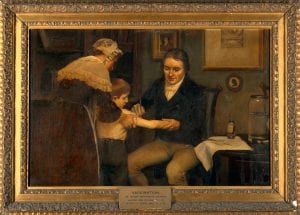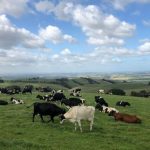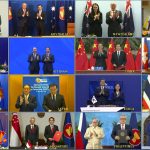
While nations everywhere struggle to prevent the further spread of the virus, developing a Covid-19 vaccine has, apparently, become the number one priority in the world right now. Several candidate vaccines are in development, including a few that are currently in phase 3 trials in the US. The first two were halted briefly after safety incidents, but the FDA has since allowed them to continue. The results are promising.
So, with the race to produce an approved vaccine now in full swing, I thought I’d take a quick look back at how the very first vaccine was discovered. And the essential part that dairy cows and a milkmaid played in that discovery.
What is a vaccine?
Vaccines have been protecting people from specific diseases for decades (e.g. measles, polio, smallpox). They’re designed to direct the immune system (the body’s natural defense against contagion) to fight off certain identifiable germs and, in doing so, build immunity against infectious diseases.
They’re generally made up of dead or weakened forms of disease-causing germs (bacteria or virus), but in some cases, antigens (inactivated toxins) produced by the germ may be used (e.g. tetanus, diphtheria).Once the vaccine is introduced to the immune system, it will respond quickly to create the antibodies and memory cells that offer protection against encounters with the actual disease-causing microorganisms. On average, that ‘immune response’ will take from one to three weeks to be fully realized.
Spread of Infectious Diseases
Throughout history, the spread of infectious diseases has been linked to international trade and global travel. Accounts have been reported over more than seven centuries on 6 continents.
In the 1330s, bubonic plague spread from central Asia to China, India, and the Middle East. In 1347, Italian merchants from Genoa and Venice spread plague across the Mediterranean.
European explorers and colonists brought diphtheria, hookworm, influenza, malaria, measles, mumps, scarlet fever, smallpox, typhoid, typhus, and yellow fever to the New World. The impact was devastating. By all accounts, the indigenous American population was reduced by 50- to 90-percent. And many believe that introduced-infectious-diseases may have been responsible for wiping out both the Aztec and the Incan empires.
Measles killed 20-percent of Hawaii’s indigenous people during the 1850s and Fiji’s indigenous population in the 1870s. A combination of flu, measles, smallpox, and whooping cough reduced the Maoris population of New Zealand from about 100,000 in 1840 to 40,000 in 1860.
The 1918 influenza pandemic, commonly referred to as the Spanish flu, affected 500-million people around the world; roughly 1/3 of the global population. By most accounts, 50 million people died. But the true death toll is believed by many, to be much greater. 675,000 American lives were lost; 195,000 in October of 1918 alone; the deadliest month in American history.
The First Vaccine
Smallpox was, perhaps, the most contagious disease in history. On average, 3 out of every 10 people who fell victim to it died. Those who survived were usually left severely pockmarked for life and/or blind.
For centuries, treatment involved a process called variolation (named after the virus that causes smallpox; variola); transferring smallpox from a sick patient into a healthy one by blowing powdered smallpox scabs up a healthy person’s nose or taking pus from someone suffering with smallpox and inserting it into the skin of a healthy individual. It wasn’t a cure. Variola-treated-patients became infected. But a lower death rate was achieved.
In 1796, however, an accomplished English doctor, Edward Jenner, decided to try an experiment. He’d seen how cows often developed abscesses that looked similar to smallpox sores, but didn’t kill or even appear to hurt them. He’d observed too, how milkmaids developed similar pustules on their hands, but that the eruptions left little or no scarring.
Legend has it that when approached by Dr. Jenner, a young milkmaid named Sarah Nelms, who had fresh cowpox lesions on her hands and arms, told him that because she had cowpox, she would “never have smallpox; never have an ugly pockmarked face.” Nelms then agreed to allow the good doctor to gather pus from the cowpox lesions on her hands.
On May 14, 1796, Jenner introduced the harvested secretions into a cut he made in the arm of his gardener’s son; 8-year-old James Phipps. The boy briefly developed mild fever, discomfort and, days later, chills and loss of appetite. But he recovered.
In July 1796, and on 20 other separate occasions, Jenner attempted to inoculate Phipps with human smallpox. But no disease developed.
Since the Latin word for cow is vacca, and cowpox is vaccinia; Jenner called his new procedure vaccination.
Hope
Jenner hoped that vaccination would eliminate smallpox from the face of the earth. And on May 8, 1980, the 33rd World Health Assembly officially declared the world free of the disease. Eradication of smallpox is considered history’s greatest achievement in international public health.
As we pursue a vaccine for the novel coronavirus, that gives me hope.























